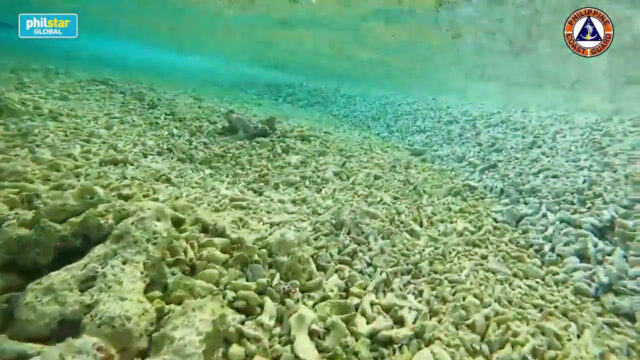By Kenneth Christiane L. Basilio, Reporter
MORE THAN 50 Chinese vessels were anchored near a disputed reef in the South China Sea, the Philippine Coast Guard (PCG) said on Thursday, a day after accusing Chinese Coast Guard (CCG) vessels of harassment in the Spratlys.
The Chinese Maritime Militia ships have been seen swarming near Iroquois Reef since Tuesday, PCG spokesman Commodore Jay Tristan Tarriela told a news briefing.
Two PCG ships were sent to challenge the vessels at the reef, which lies east of the disputed Spratly Islands.
“We challenged them through the radio,” he said. “We informed them that their presence, their movement and their swarming and anchoring activities do not conform to freedom of navigation.”
“This kind of behavior basically violates our sovereign rights in our exclusive economic zone (ecozone),” he added.
The Chinese Embassy in Manila did not immediately reply to a Viber message seeking comment.
Iroquois Reef, which Manila calls Rozul Reef, is 113 nautical miles (209 kilometers) off the major Philippine island of Palawan, well within Manila’s 200-nautical mile exclusive economic zone, Mr. Tarriela said.
“The People’s Republic of China does not have authority over this area.”
China claims nearly all of the South China Sea via a U-shaped, 1940s nine-dash line map that overlaps with the exclusive waters of the Philippines and neighbors like Vietnam and Malaysia.
A United Nations-backed tribunal in 2016 voided China’s sweeping claims for being illegal, a ruling that Beijing does not recognize.
The reef has been the scene of confrontations between the Philippines and China, with Manila alleging that Chinese forces had harassed Filipino fishermen there in separate incidents last year.
The presence of Chinese militia vessels at the reef might be meant to intimidate Filipino fishermen, Mr. Tarriela said.
Tensions between the Philippines and China in the South China Sea have intensified in the past year, as Chinese forces sought to reinforce their claim over the resource-rich waterway.
“The Chinese Maritime Militia has been used by Beijing for various purposes in recent years, primarily to assert its claims over areas unoccupied by coastal states,” Mr. Tarriela said. “They could also be used for surveillance and intelligence-gathering purposes.”
The PCG deployed small boats to get closer to the anchored Chinese ships at Iroquois Reef after they failing to respond to repeated radio challenges, he said, adding that they are expected to leave in the coming days.
“What we can do right now is to document the bow numbers of all these Chinese maritime militia vessels,” Mr. Tarriela said. The PCG would report the swarming activity to higher authorities, he added.
There are concerns that the Chinese ships could’ve damaged the corals at the reef, the coast guard spokesman said.
“There is a very high possibility that they harmed our environment, considering that… they are anchored in the shallow waters of Rozul Reef,” Mr. Tarriela said in mixed English and Filipino.
“A marine study must be conducted at Iroquois Reef if the government intends to use the suspected coral damage to bolster the planned arbitration case against China,” former Supreme Court Justice Antonio T. Carpio said in a Viber message.
“There must first and foremost be a marine scientific assessment by the University of the Philippines Marine Science Institute that the damage was man-made,” he said. “This must be corroborated by foreign marine scientists.”
In 2023, the PCG said Iroquois Reef had been severely damaged by swarming Chinese ships.
The Philippines is seeking to file another arbitration case against China stemming from alleged environmental damage by Beijing over maritime features that lie within Manila’s ecozone.












